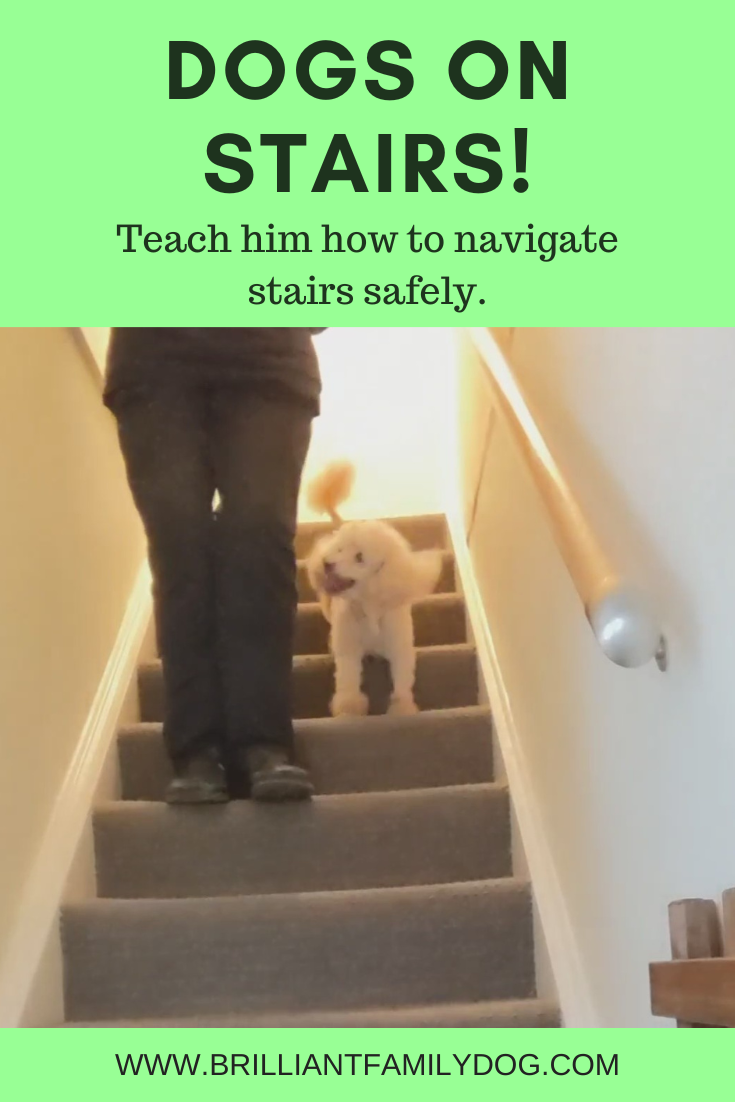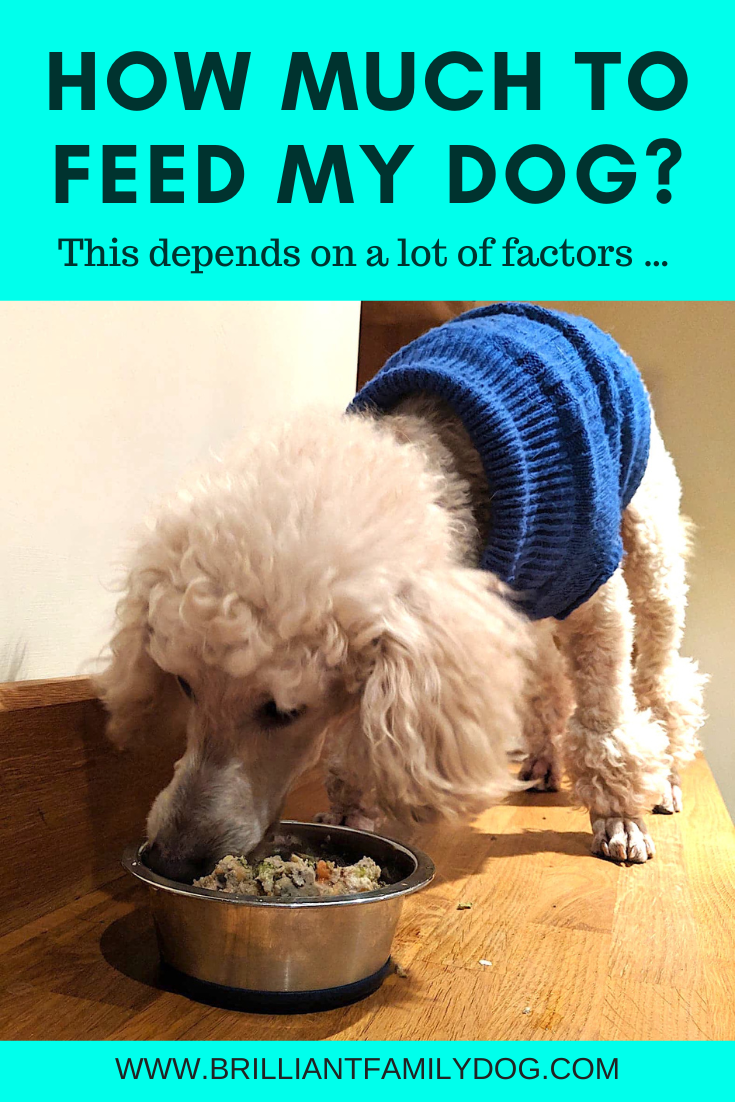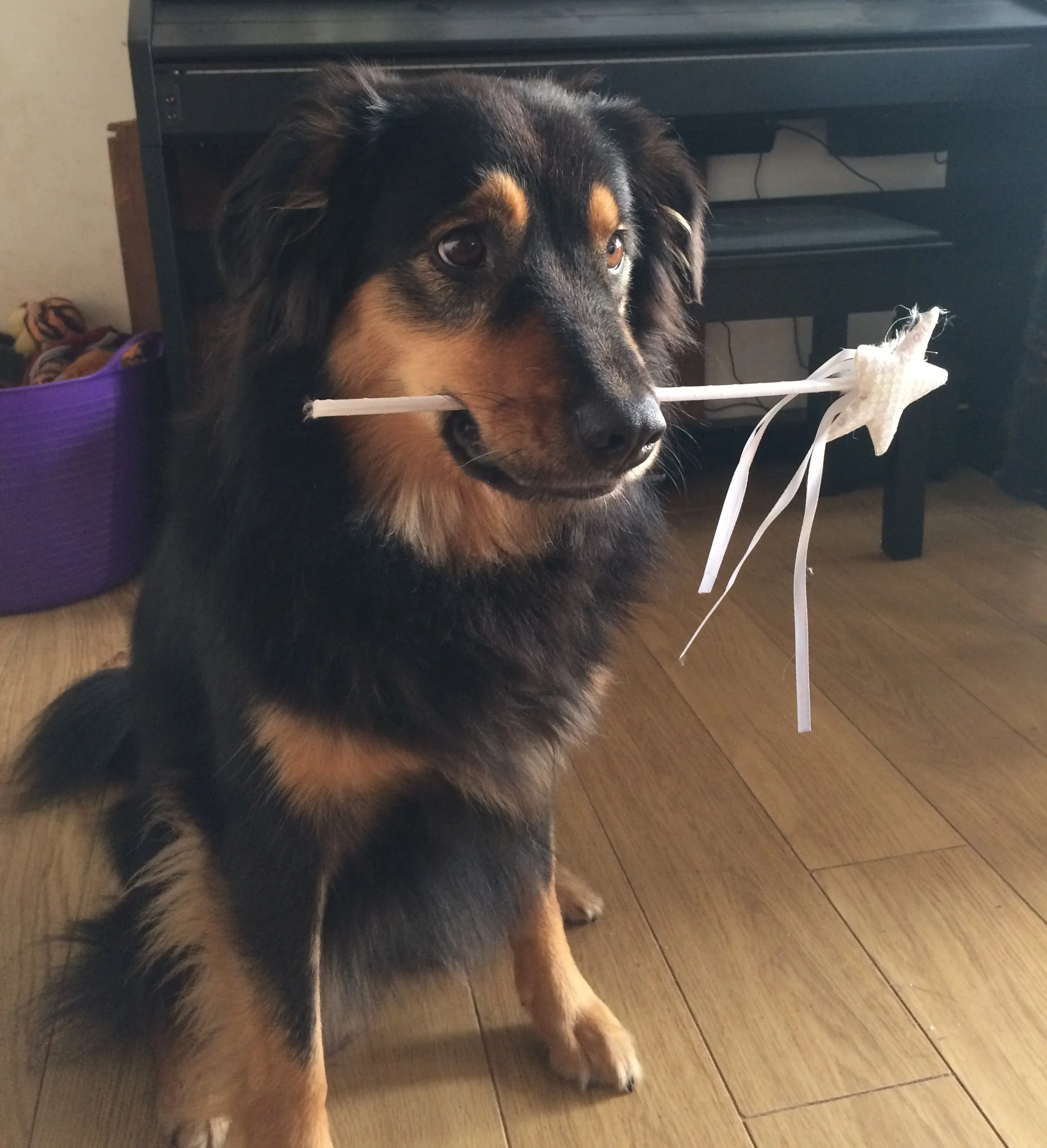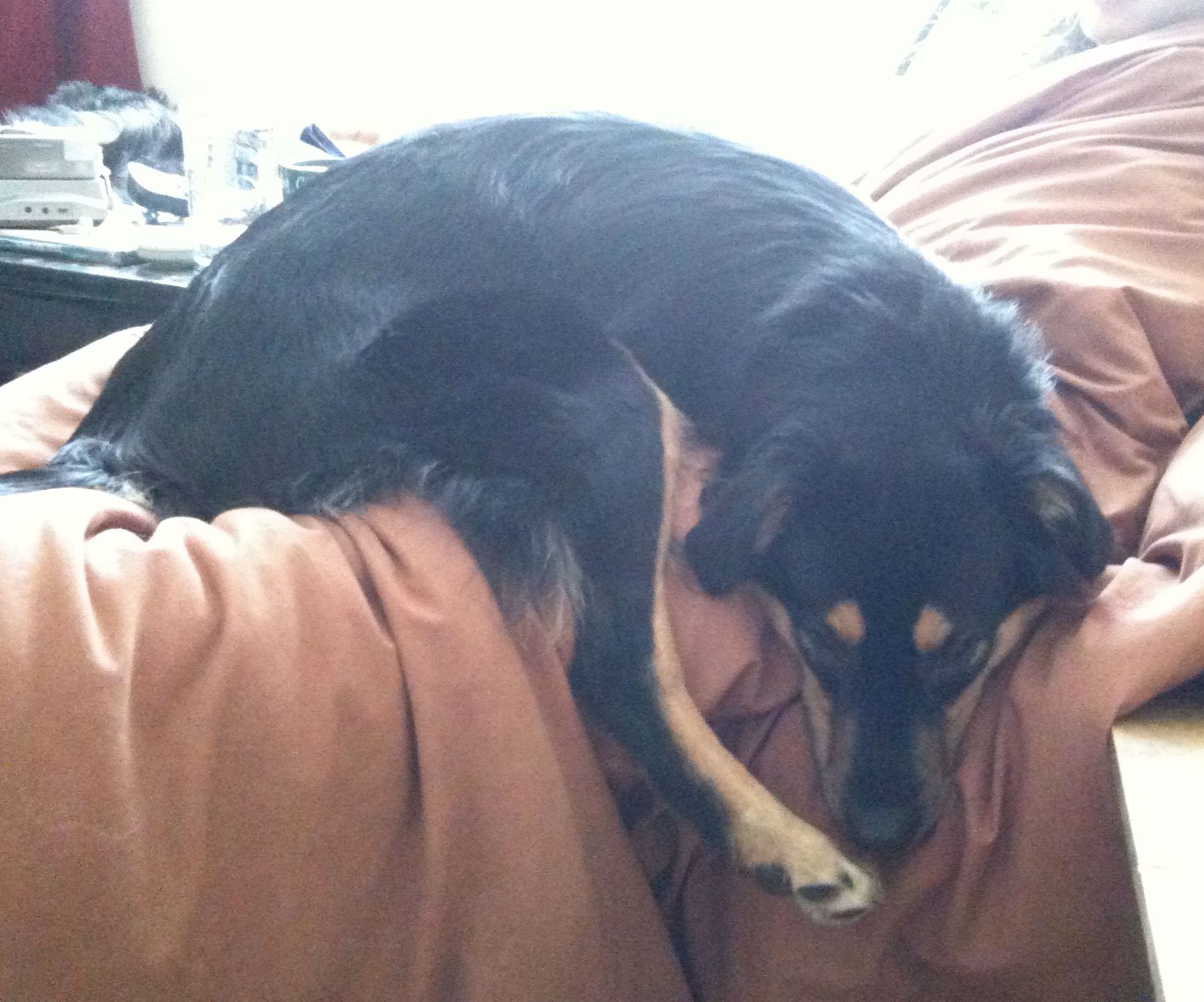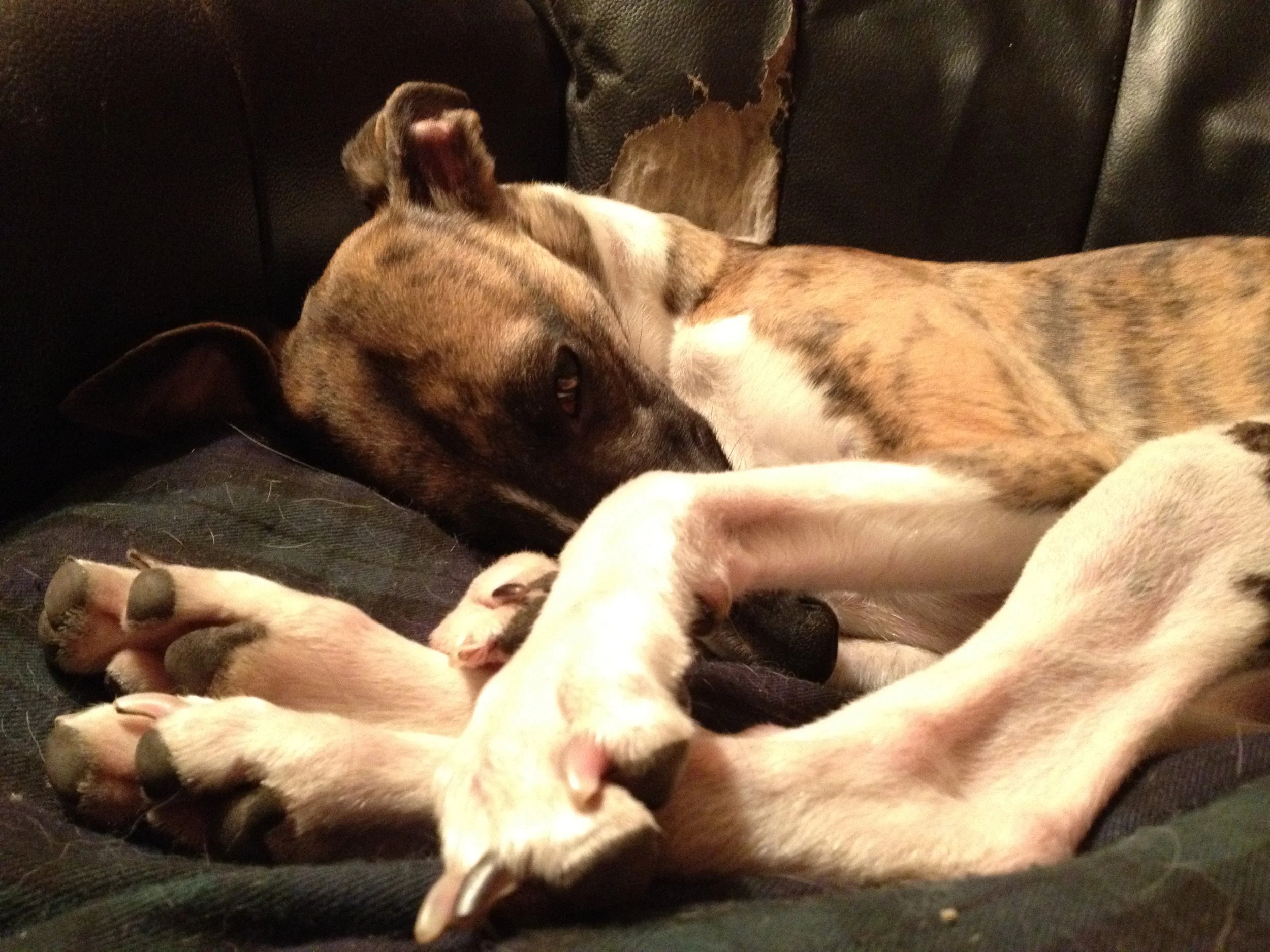This is an especially important question for new puppy-owners! But we could all look to make sure we’re avoiding accidents - to us as well as to our dogs - by teaching them right from the start.
First of all, your stairs are safer if carpeted, but this isn’t essential. A mat or some sort of non-slip surface at the bottom of the stairs is important, especially as at the foot of most staircases there is a sharp turn. Puppies are particularly vulnerable to injury on slippery corners!
First of all, you want to make sure the stairs are gated, so there’s no free access to them without you being there to supervise.
And this is how you start:
At the bottom of the stairs, your dog is on lead
Place a treat on the first step.
Let your dog eat it then place a treat on the next step up.
Step up beside your dog as he ascends, step by step, treat by treat.
Slow and steady till you get to the top!
If your puppy is freaking out, just do two steps then lift him off. Work at this gradually till you can step all the way up. This will take as long as it takes.
Now you’re at the top! 🎉
So how to get down again?!
Use exactly the same method. You may need to keep the lead shorter now (without putting pressure on his neck, of course!) to make sure your dog doesn’t try to race down.
And it’s super-important to ensure there is a treat not only on the bottom step, but also on the mat at the foot of the stairs. You want to ensure your dog always steps all the way down and doesn’t leap off early! .. as you’ll see Coco does correctly in the two videos on this page.
Next stage
Gradually, you’ll be able to remove the lead from the exercise, and space the treats out a little more (though be very slow to remove the last two on the way down!).
And once you know your dog has got this, you’ll be able to let him go up and down on his own.
You’ll need to find other stairs for him to get used to as well - concrete stairs, other sorts of house stairs, metal stairs, log stairs …
Once you’re both expert at this, you can have some fun together, going up and down stairs:
Coco learns stairs
Safety for us!
Incidentally, there’s a lot of nonsense talked about who should go through a door first. Real nonsense.
Certainly, your dog shouldn’t barge through doors, but once they can wait for permission to go through, I always send mine through first. I don’t want an excited dog to take my legs out!
Same goes for stairs.
I always send my dogs up or down stairs ahead of me. It’s simple commonsense!
No need to get tangled up in dominance nonsense.
Stair agility!
Once your dog is comfortable on the stairs, you can develop his balance skills and have fun with some stair games
Here’s a video to give you some ideas - see how much Coco is enjoying this!
